Abstract
1. Multi-unit and single-unit recordings were made of muscle spindle afferent activity from the pretibial muscles of human subjects who were initially relaxed. The muscles were subjected to a stretching perturbation of 1 s duration, occurring irregularly, on average once every 5 s. In test sequences, an auditory or visual warning was provided 1 . 06 s before some of the perturbations. Subjects were required to oppose every perturbation by contracting the receptor-bearing muscle as rapidly as possible. 2. Following the warning all subjects sometimes tensed the receptor-bearing muscle unintentionally in preparation for the perturbation. In these contractions, the discharge of a spindle ending accelerated only if the contraction strength exceeded the ending's threshold for activation, established in control voluntary contractions performed under isometric conditions. 3. When the receptor-bearing muscle did not contract in the interval between warning and perturbation, there was no detectable change in the multi-unit recordings of spindle activity or in recordings from twelve of thirteen single spindle afferents. The thirteenth spindle afferent discharged prior to the perturbation in the absence of detectable e.m.g. in response to (only) three of twenty-three warning stimuli. However, this ending had been so responsive during isometric voluntary contractions that a contraction level at which it did not respond could not be established, and it is suggested that the findings with this ending resulted from its low threshold rather than from selective activation of the fusimotor system. 4. When subjects were warned of the perturbations, the dynamic response of spindle endings to the perturbations was not increased in size or altered in latency. 5. The motor response to perturbations without warning generally contained only long-latency (volitional) e.m.g. activity occurring 107--200 ms after the onset of the perturbation. When a warning was given, short-latency (reflex) e.m.g. activity was also recorded, beginning 46--76 ms after the onset of the perturbation. 6. It is concluded that anticipation of the need to contract a muscle does not result in selective activation of fusimotor neurones in preparation for the contraction. The change in stretch reflex gain that occurs as a result of 'anticipation' occurs through a central process which does not involve the fusimotor system.
Full text
PDF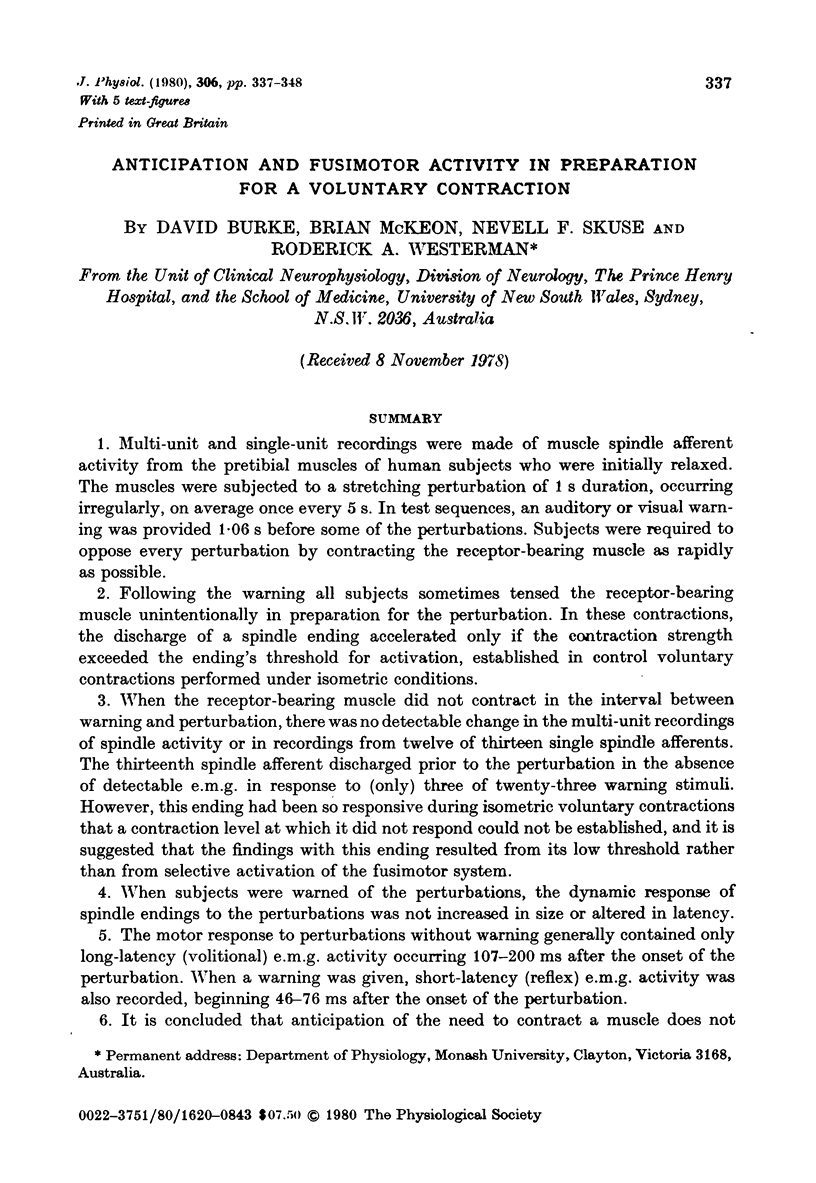
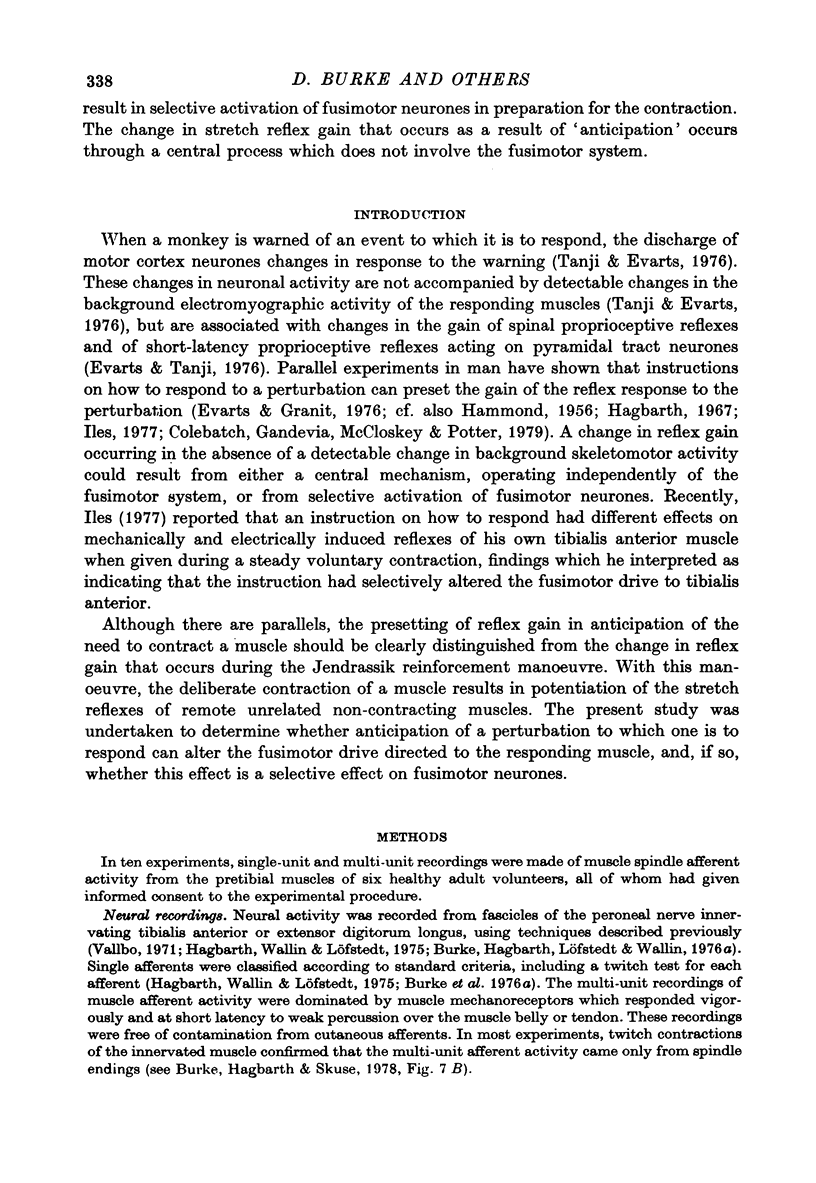
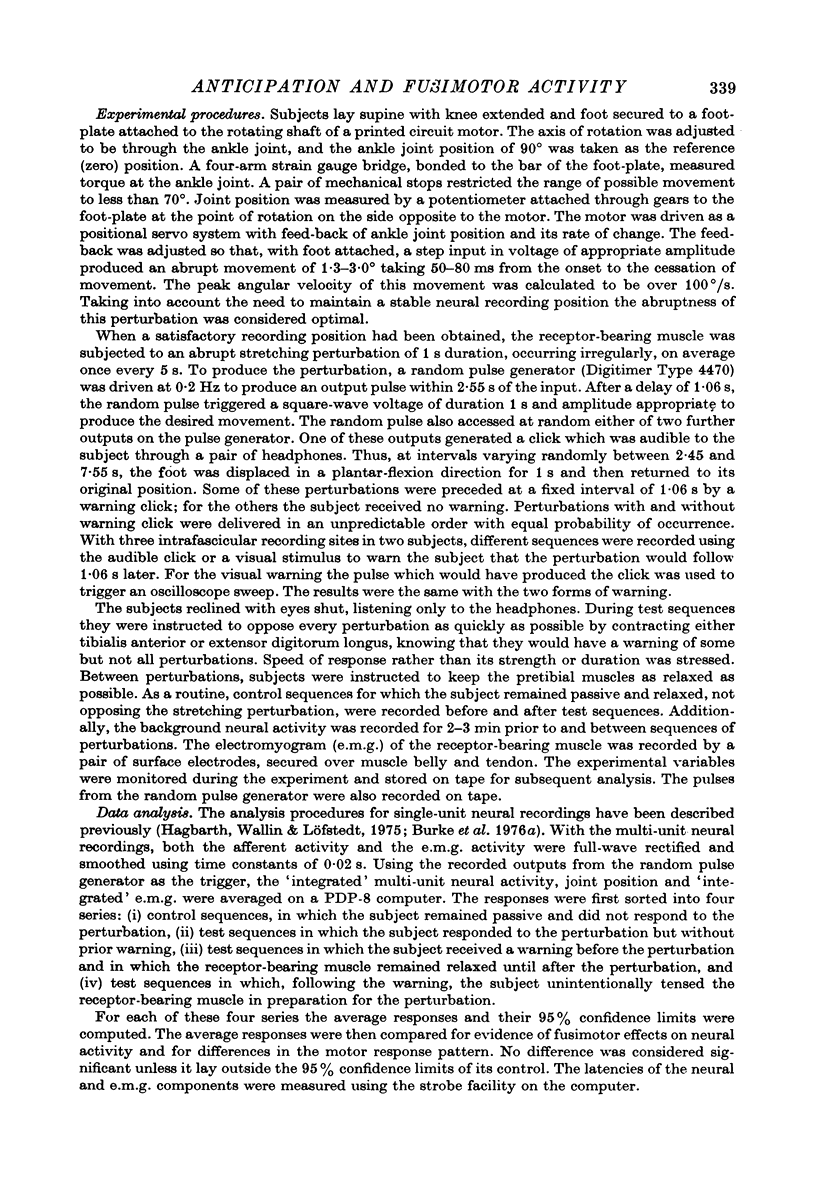
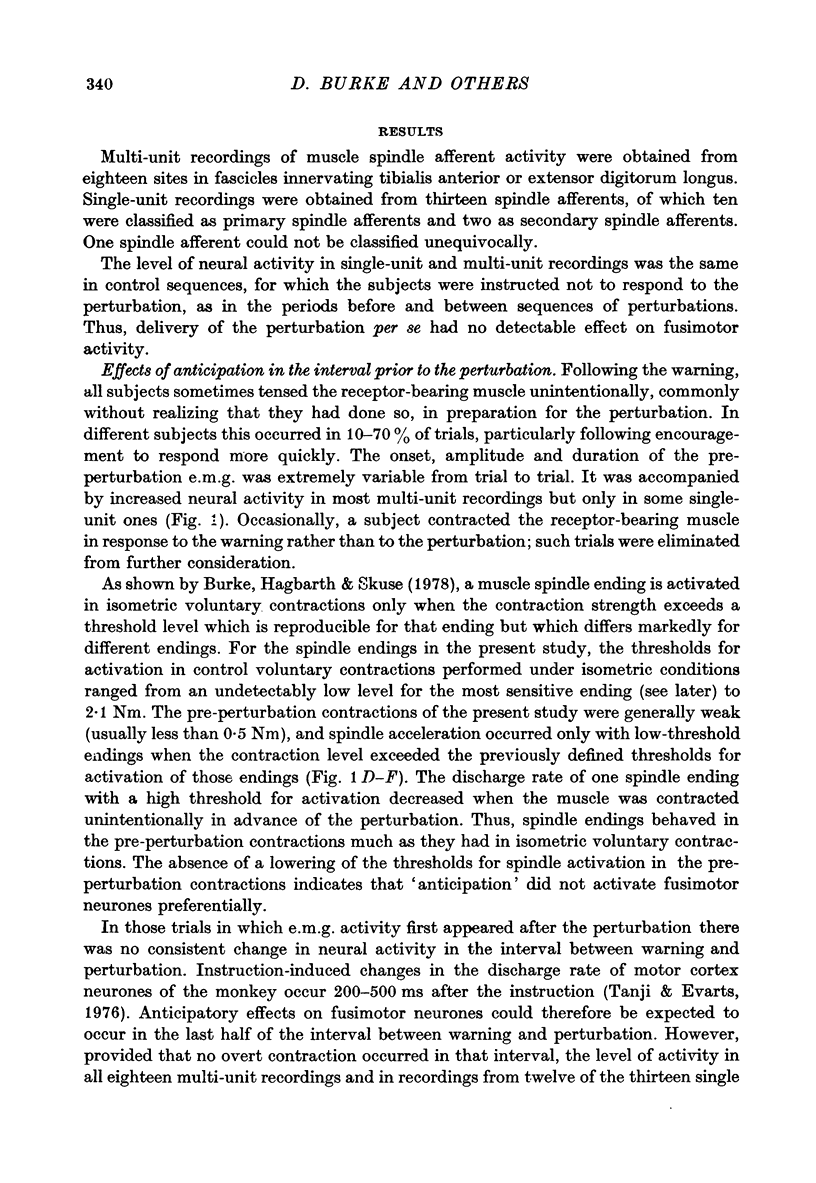
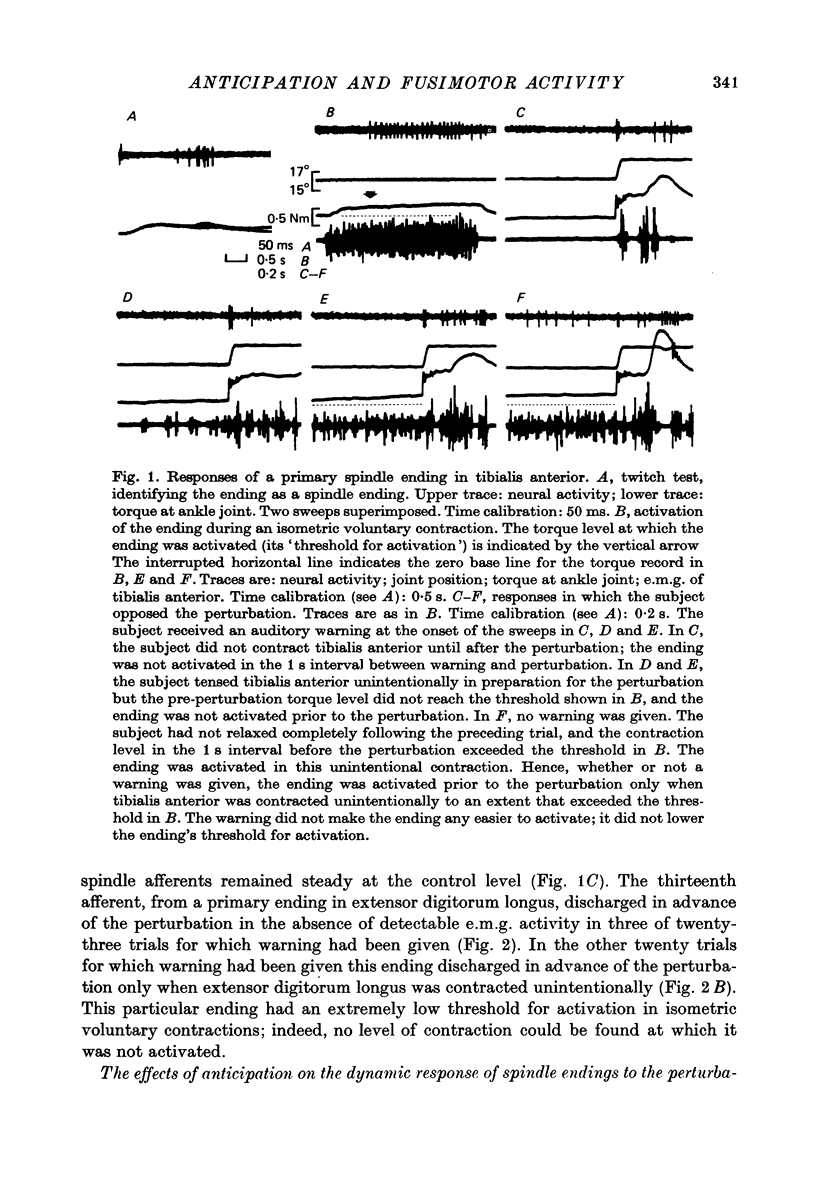
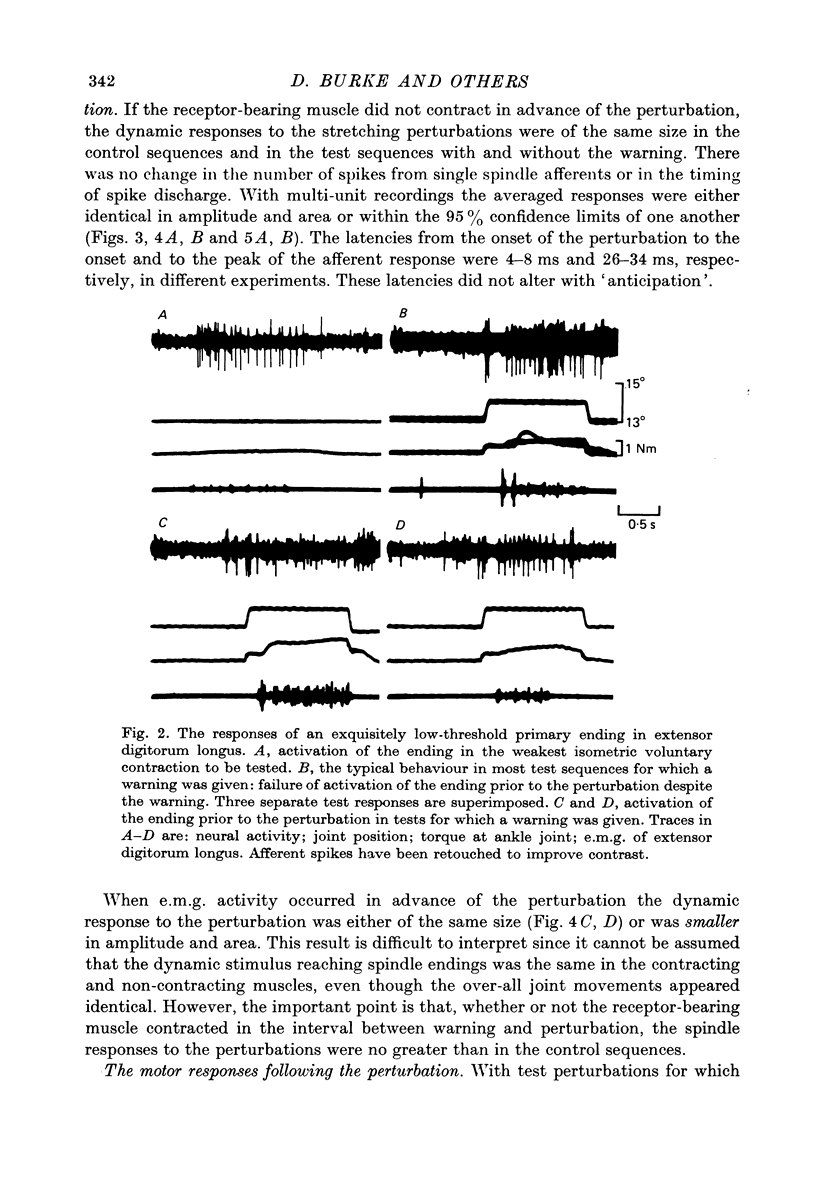
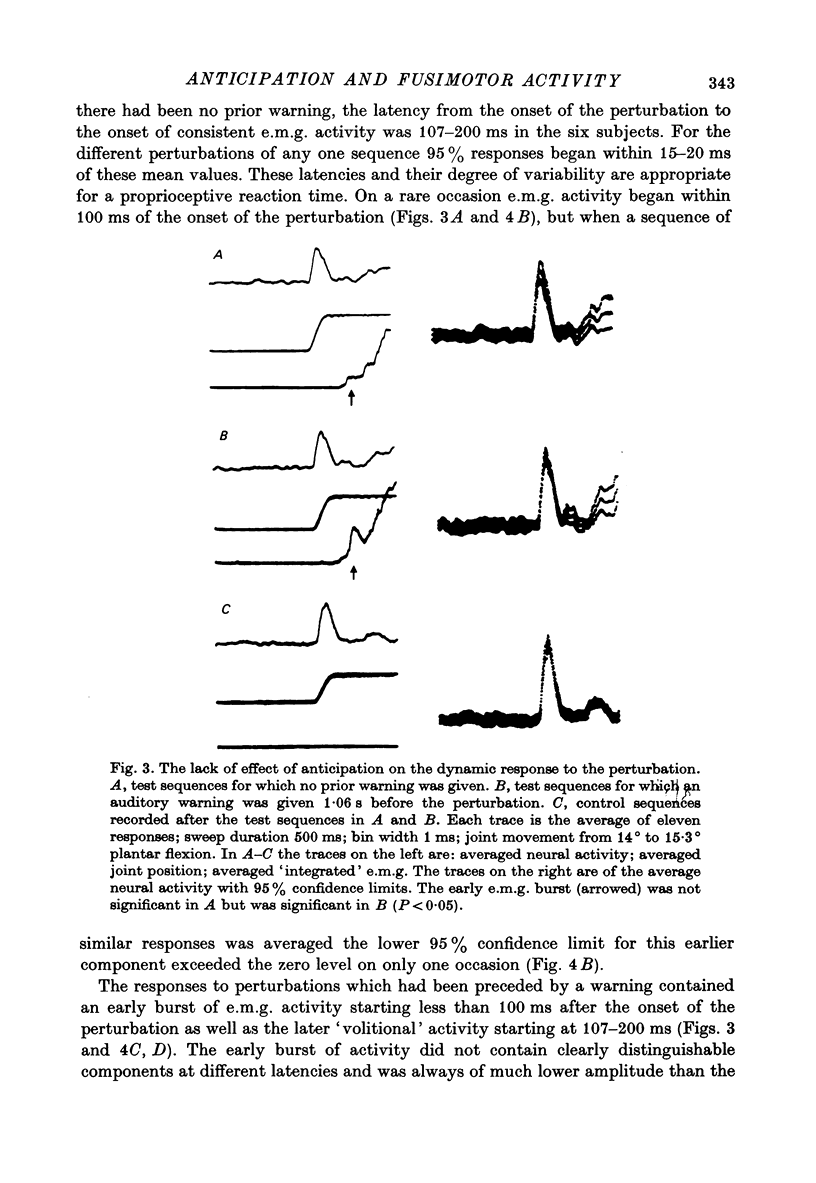
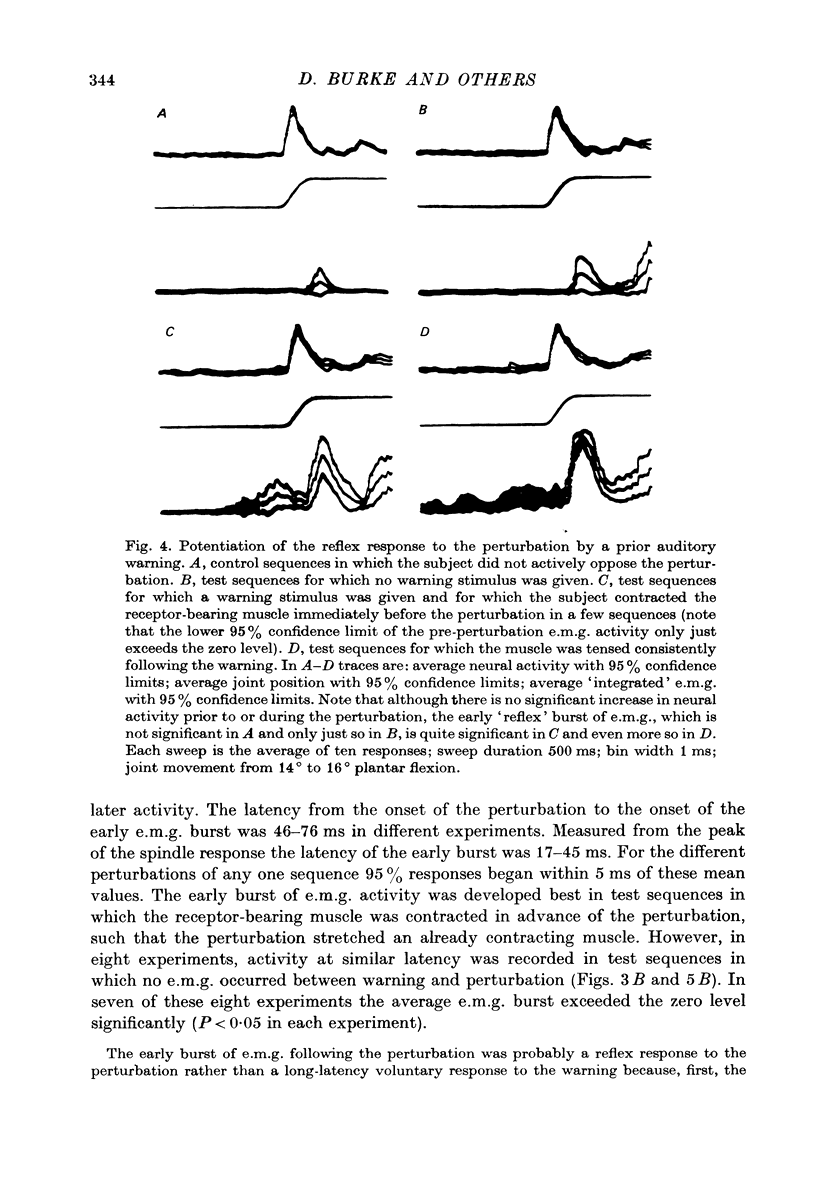
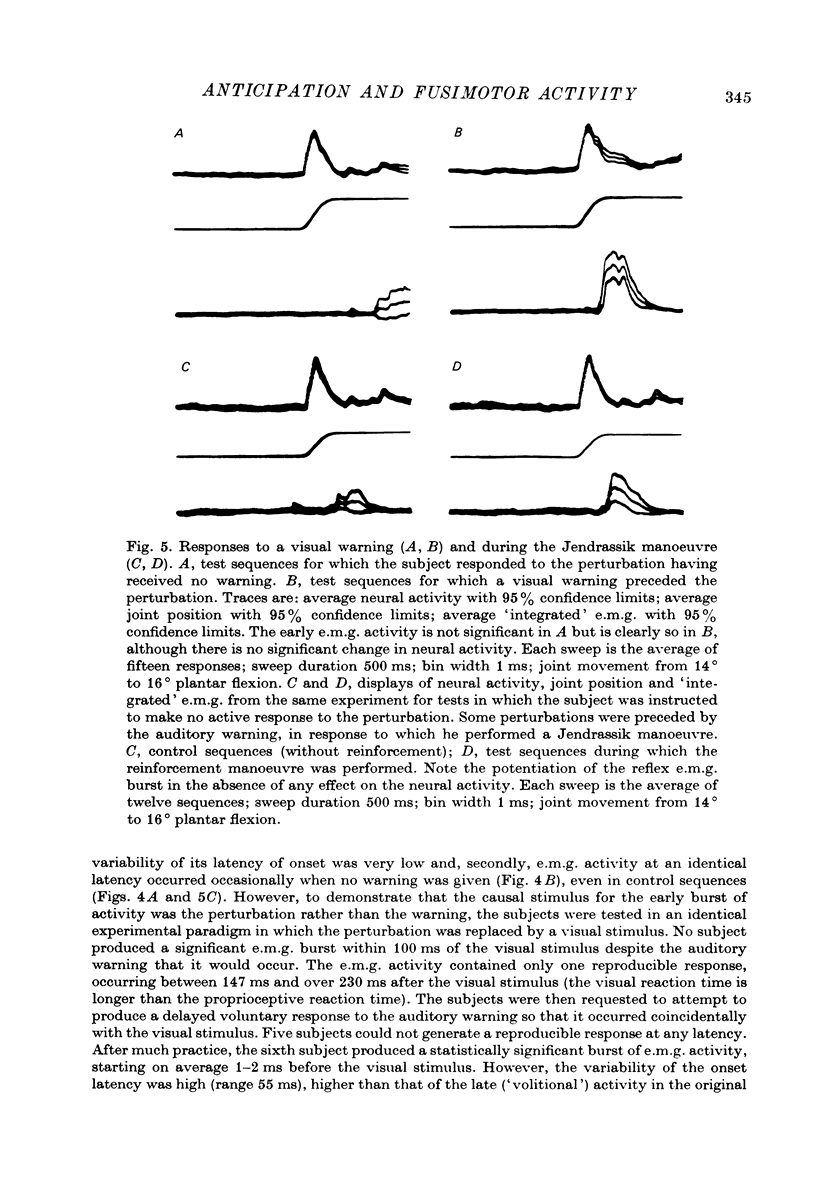
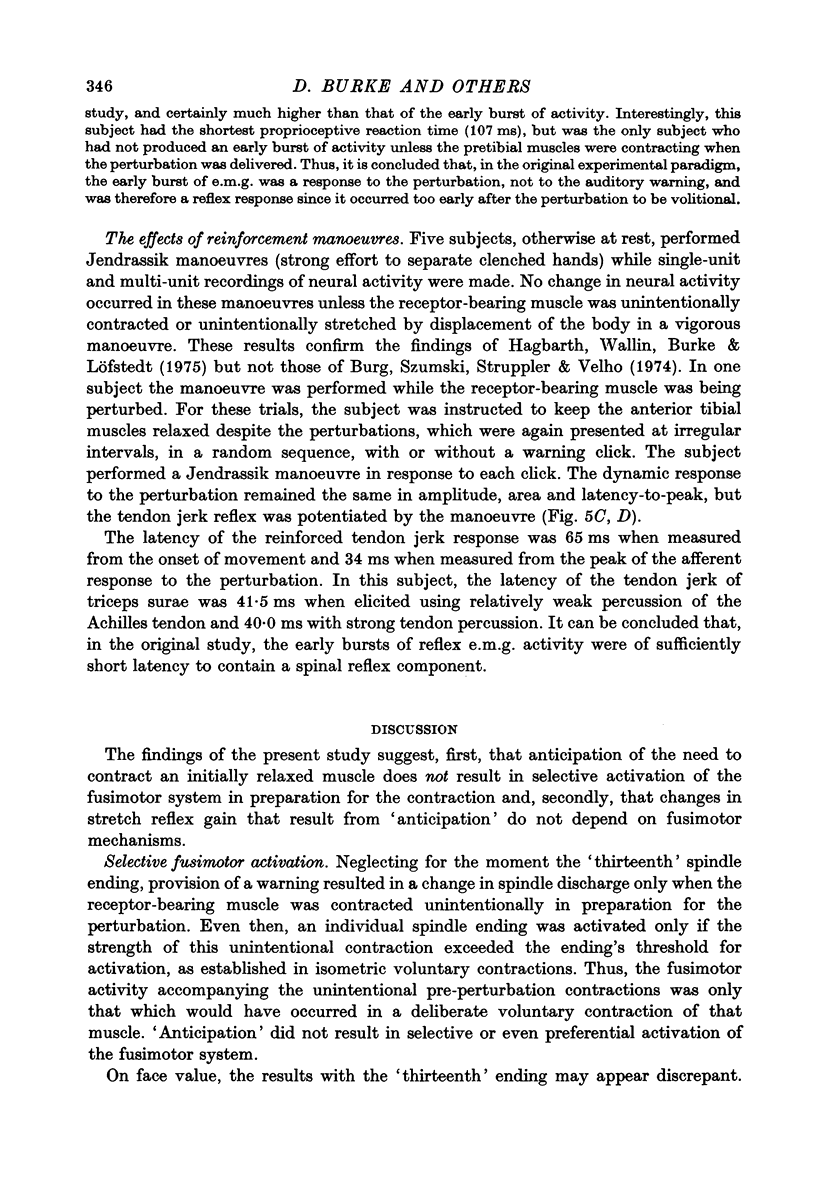
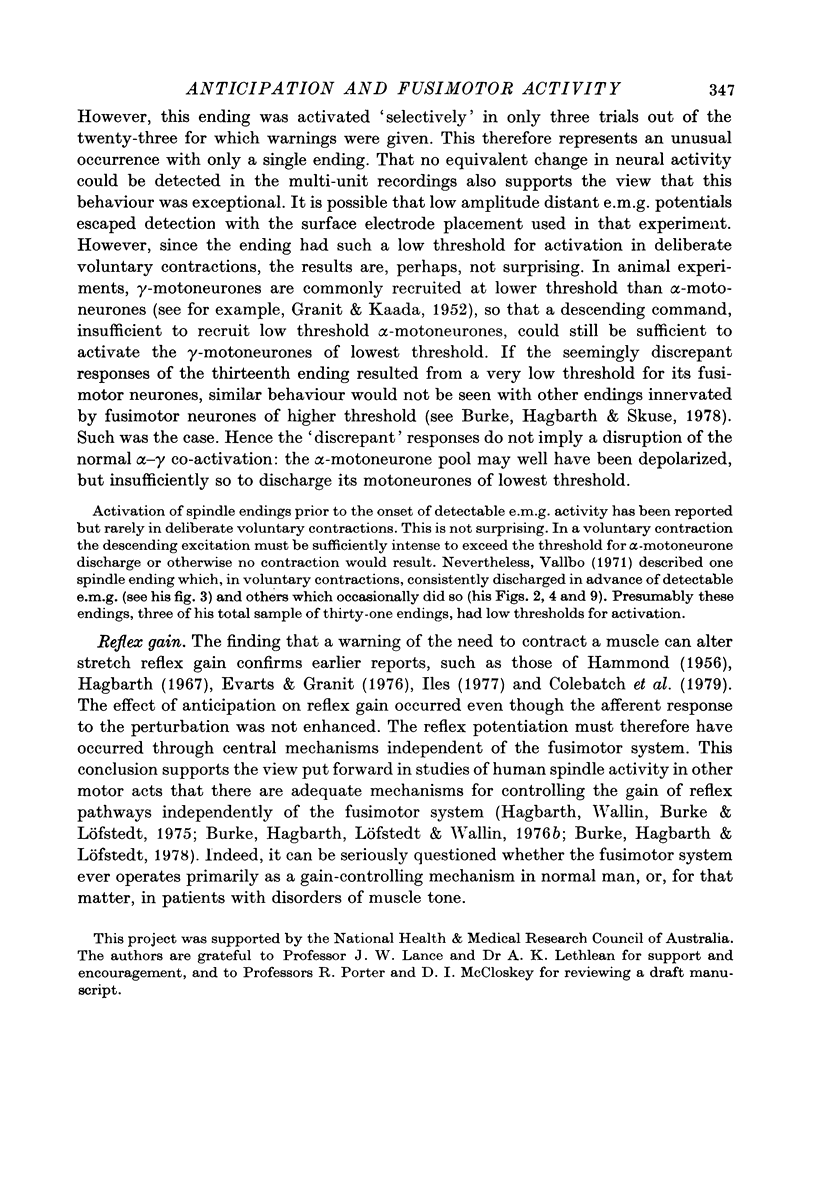
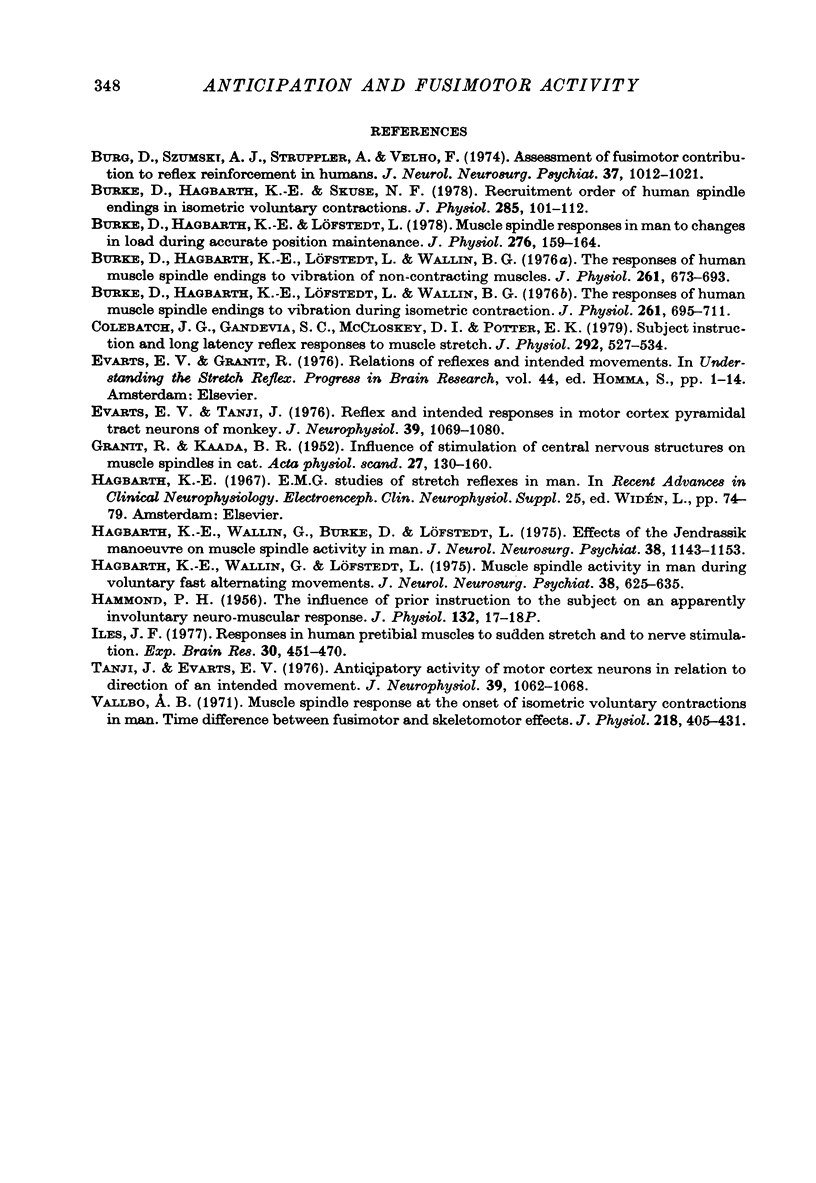
Selected References
These references are in PubMed. This may not be the complete list of references from this article.
- Burke D., Hagbarth K. E., Löfstedt L. Muscle spindle responses in man to changes in load during accurate position maintenance. J Physiol. 1978 Mar;276:159–164. doi: 10.1113/jphysiol.1978.sp012225. [DOI] [PMC free article] [PubMed] [Google Scholar]
- Burke D., Hagbarth K. E., Löfstedt L., Wallin B. G. The responses of human muscle spindle endings to vibration during isometric contraction. J Physiol. 1976 Oct;261(3):695–711. doi: 10.1113/jphysiol.1976.sp011581. [DOI] [PMC free article] [PubMed] [Google Scholar]
- Burke D., Hagbarth K. E., Löfstedt L., Wallin B. G. The responses of human muscle spindle endings to vibration of non-contracting muscles. J Physiol. 1976 Oct;261(3):673–693. doi: 10.1113/jphysiol.1976.sp011580. [DOI] [PMC free article] [PubMed] [Google Scholar]
- Burke D., Hagbarth K. E., Skuse N. F. Recruitment order of human spindle endings in isometric voluntary contractions. J Physiol. 1978 Dec;285:101–112. doi: 10.1113/jphysiol.1978.sp012560. [DOI] [PMC free article] [PubMed] [Google Scholar]
- Colebatch J. G., Gandevia S. C., McCloskey D. I., Potter E. K. Subject instruction and long latency reflex responses to muscle stretch. J Physiol. 1979 Jul;292:527–534. doi: 10.1113/jphysiol.1979.sp012869. [DOI] [PMC free article] [PubMed] [Google Scholar]
- Evarts E. V., Granit R. Relations of reflexes and intended movements. Prog Brain Res. 1976;44:1–14. doi: 10.1016/S0079-6123(08)60719-0. [DOI] [PubMed] [Google Scholar]
- Evarts E. V., Tanji J. Reflex and intended responses in motor cortex pyramidal tract neurons of monkey. J Neurophysiol. 1976 Sep;39(5):1069–1080. doi: 10.1152/jn.1976.39.5.1069. [DOI] [PubMed] [Google Scholar]
- GRANIT R., KAADA B. R. Influence of stimulation of central nervous structures on muscle spindles in cat. Acta Physiol Scand. 1952;27(2-3):130–160. doi: 10.1111/j.1748-1716.1953.tb00930.x. [DOI] [PubMed] [Google Scholar]
- HAMMOND P. H. The influence of prior instruction to the subject on an apparently involuntary neuro-muscular response. J Physiol. 1956 Apr 27;132(1):17–8P. [PubMed] [Google Scholar]
- Hagbarth K. E. EMG studies of stretch reflexes in man. Electroencephalogr Clin Neurophysiol. 1967;(Suppl):74–79. [PubMed] [Google Scholar]
- Hagbarth K. E., Wallen G., Löfstedt L. Muscle spindle activity in man during voluntary fast alternating movements. J Neurol Neurosurg Psychiatry. 1975 Jul;38(7):625–635. doi: 10.1136/jnnp.38.7.625. [DOI] [PMC free article] [PubMed] [Google Scholar]
- Hagbarth K. E., Wallin G., Burke D., Löfstedt L. Effects of the Jendrassik manoeuvre on muscle spindle activity in man. J Neurol Neurosurg Psychiatry. 1975 Dec;38(12):1143–1153. doi: 10.1136/jnnp.38.12.1143. [DOI] [PMC free article] [PubMed] [Google Scholar]
- Iles J. F. Responses in human pretibial muscles to sudden stretch and to nerve stimulation. Exp Brain Res. 1977 Dec 19;30(4):451–470. doi: 10.1007/BF00237637. [DOI] [PubMed] [Google Scholar]
- Tanji J., Evarts E. V. Anticipatory activity of motor cortex neurons in relation to direction of an intended movement. J Neurophysiol. 1976 Sep;39(5):1062–1068. doi: 10.1152/jn.1976.39.5.1062. [DOI] [PubMed] [Google Scholar]
- Vallbo A. B. Muscle spindle response at the onset of isometric voluntary contractions in man. Time difference between fusimotor and skeletomotor effects. J Physiol. 1971 Oct;218(2):405–431. doi: 10.1113/jphysiol.1971.sp009625. [DOI] [PMC free article] [PubMed] [Google Scholar]


